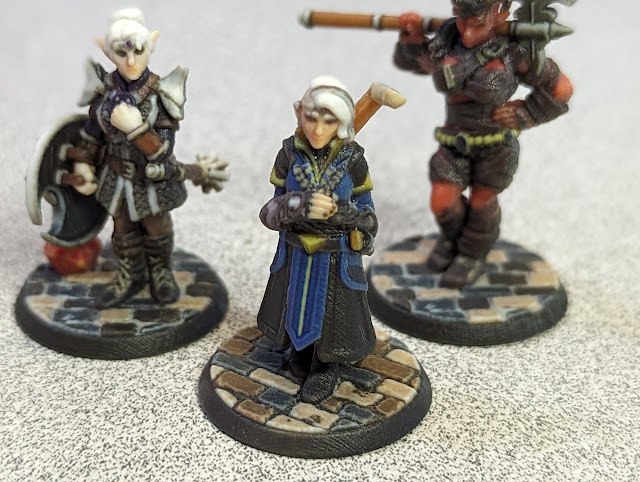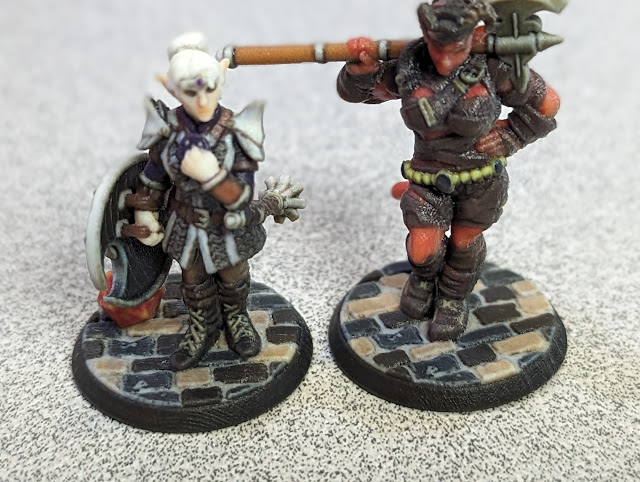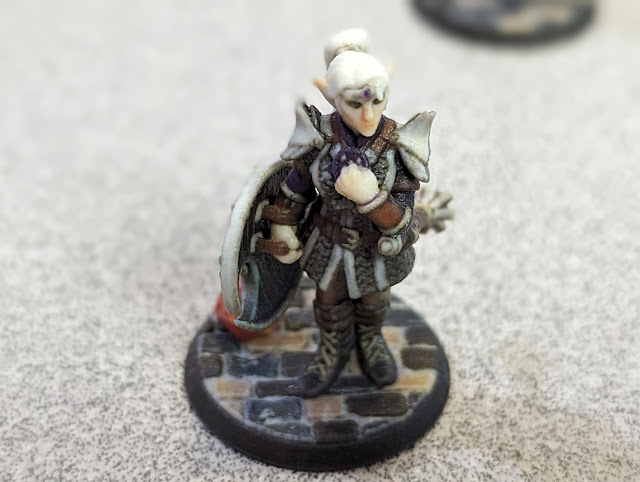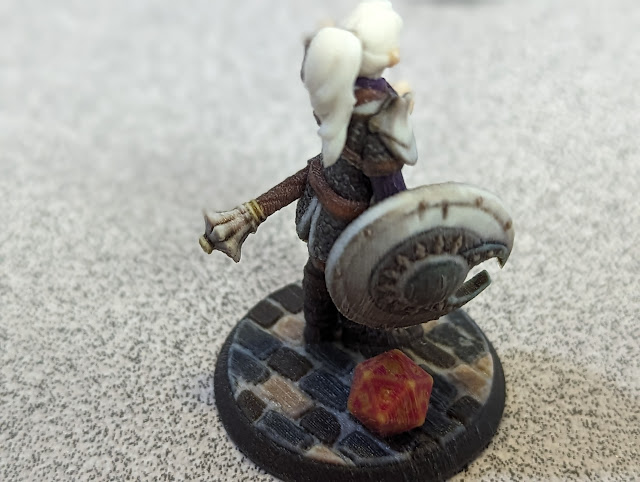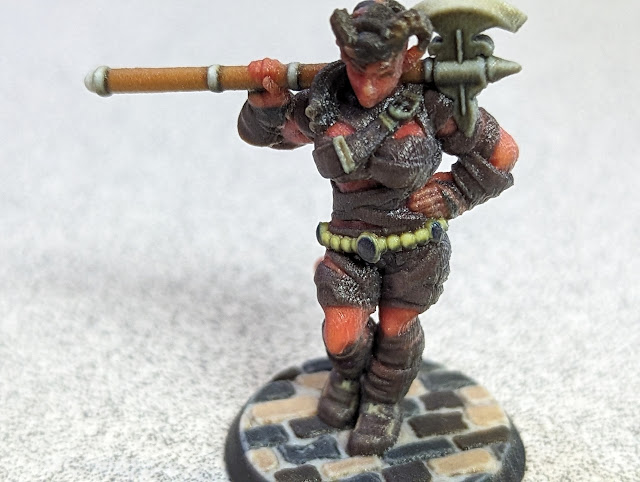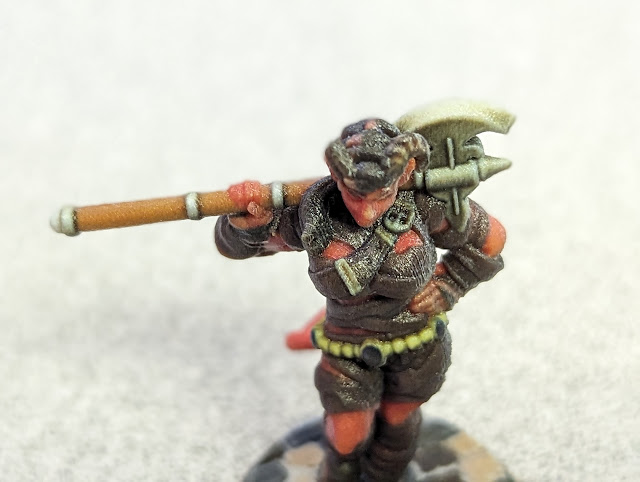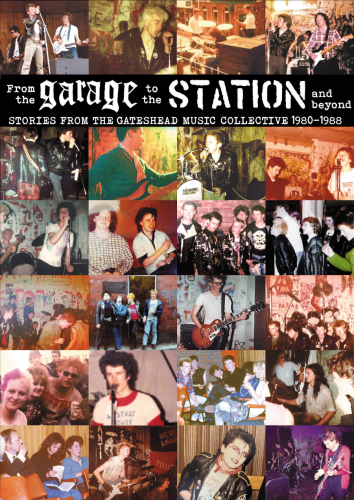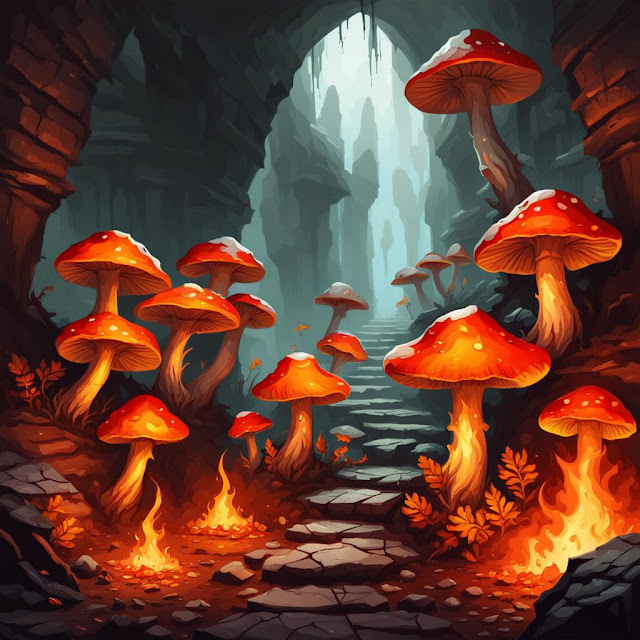
The Great River gives all that you need. Fish swim in abundance through the Silver Pits and rice grows thick and luscious on the Glas Road. Storms break on the riverbanks, leaving treasures to be found in the silt. Trade brings goods downstream and upstream, from far away. It is all that anyone would wish for, but for the curious. To the curious, the River simply flows by without answering the questions, “What lies at the beginning?” and What lies at the end?” For no one has ever found the Source of the River and thus the source of both its riches and the magic of the world. Likewise, no one has travelled to the mouth of the River. Anyone who would search for the Source is a fool, looking for faerie gold, whilst anyone who would go in search of the Sea is seen as already lost, drowned in the ravenous Sea. Yet there are such curious fools and you are one of them, for you and your crew has sworn a magical Oath to make the perilous journey to either the Source or the Sea, one that commits your very soul—even after death!—to reaching your destination or forfeit your souls and your ship to the water. This is the set-up for Upriver, Downriver, a roleplaying designed to be played somewhere in somewhere between four and twelve sessions’ worth of game play. At the end of that, the story of the voyage has been told and to play Upriver, Downriver again means setting out with an entirely different crew and boat and quite possibly in the other direction to that taken in the first campaign. In addition, the use of Tarot cards to determine the outcome of the crew communing with the River to receive either her Blessing or her Curse in combination with the twenty locations along the River do give it scope for replay. It is no surprise that
Upriver, Downriver is built around limited play time, for the publisher has form with this with
Odd Jobs: RPG Micro Settings Vol. I, a superlative collection of systemless mini-campaigns.
Upriver, Downriver is published by
MacGuffin & Co. following a successful
Kickstarter campaign. The direction of the sworn Oath sets the theme and tone of the campaign. An Oath sworn to reach the Source is for a crew looking for adventure, magic and secrets, pirates and treasure, monsters and the challenges of the natural world from white water rapids and waterfalls to canyons and mountains, whereas an Oath sworn to reach the Sea is for a crew looking for freedom and wanting to get involved with politics, revolution, and intrigue, escape and redemption, war and peace, and facing thieves and illusionists, soldiers and fugitives, and reparation and healing. A campaign consists of three steps. There is character creation, there is a Session Zero, and then there is the play. The Session Zero is not just about Safety Tools and setting the tone and content of the campaign, but also about setting who the members of the crew and building the boat. The latter is a collective endeavour, partly determined by where the crew comes from and player choice. Play consists of journeying to locations and exploring and adventuring at each one, communing with the River for guidance, and once the stories to be told at a location have played, navigating to the next. When the crew and its ship have reached their destination, whether Source or Sea, the story as a whole is done and any who died along the way and have completed the journey as ghosts can pass on. To play
Upriver, Downriver, a group will need four-, eight-, and twelve-sided dice and a set of the Major Arcana from a Tarot deck.
A Player Character in
Upriver, Downriver is first defined by Origins, or species. These are the Riverfolk or Naiads; the long-lived and intuitive shapeshifting Kiwi, the near immortal, but rare Elves, long ago defeated by the Human Empire; the Halflings, militant weaponsmiths and armourers who hide in valleys from the Human Empire for their support of the Elves; and Humans. Each species has an Origins ability and notably, there are no descriptions of the Naiads or Kiwi. It left up to the players to agree upon what they look like. A Player Character has three attributes, Swords, Spirits, and Tongues. These are initially rated between one and four, but can go as high as ten. Then a Player Character also has a Role and Path. There are seven Roles—The Captain, The First Mate, The Gunner, The Doctor, The Engineer, The Cook, and The Priest—and within each Role, three Paths. A Path is both a code of conduct and the values that the Player Character adheres to, each Path also representing a Face of the River and so connected to the Major Arcana of the roleplaying game’s Tarot deck. A Path grants special abilities and gives commandments that the Player Character must follow. For example, the Cook can follow the Path of Judgement, The World, or The Magician. The Cook of Judgement follows his Path by making amends and help others find peace, but cannot attack the innocent, make unprovoked attacks, or aid the powerful. The Cook of The World follows his Path when travelling or making progress on his journey, but cannot remain stagnant, turn backwards, or becalm an enemy ship. The Cook of The Magician follows his Path by trusting his instincts and using magic, but cannot break a curse, kill a magical creature, or reject his magic and intuition. A Role also grants a Knack, a skill or other ability, some equipment, a Ship Battle Move, whilst each Path also gives another Knack. A Path has four Levels and each Level grants a bonus or ability. Player Characters begin play at Level One. To create a character, a player chooses an Origin, Role, and Path, and then rolls a four-sided die for each attribute. He also chooses two other Knacks. Lastly, a Player Character has a Scar. This can be physical, mental, or emotional and when it comes into play, it forces the player to roll with disadvantage.
Kiawah
Origins: Naiad
Role: The Priest
Path: The Empress (Heal others and commune with nature. Cannot curse another or cause death)
Level: 1 (Add 1d4 to healing rolls)
Swords 1 Spirits 3 Tongues 4
River Sense: 2
Health: 11
Physical Defence: 7
Spiritual Defence: 8
Abilities: Charm, Create Comfort, Create Medicine, First Aid, River Sense
Ship Battle Move: Salt-Stained Pages
Scar: Failed to cure a plague
Equipment: Talisman of The Empress
Together, the players all create their characters’ ship. This can be the durable and manoeuvrable Schooner; light and swift Catamaran; a sturdy, engine-powered Narrowboat; or a versatile and balanced Barge. The origins of the crew, north or south of the River will determine the type of boat, but the players are free to describe characters’ their boat and its origins. Each player is also free to detail as much of his character’s background as he wants.
Mechanically, to have his character undertake an action, a player will attempt to pass a Difficulty Check by rolling a twelve-sided die and adding an appropriate attribute. This is Swords for all physical tasks; Spirits for knowledge and magic-related tasks; and Tongues for wisdom, instinct, and charisma-related tasks. An average Difficulty Check is eight, difficult is twelve, and very difficult is sixteen. If the result is equal to or higher than the Difficulty Check, the Player Character succeeds, less and the Player Character must find other means of succeeding at the action. Rolls can be made with Advantage or Disadvantage, but never more than the single extra die in either case. The Swords attribute is also the primary attribute used in combat, the aim being to roll above an opponent’s Physical Defence, but unless a Player Character has a Prowess Knack like Brawling, Swordplay, Archery, or Improvised Weapons, the roll is made at disadvantage. Combat, including battles with enemy ships and river monsters, is intended to be light and fast, a possibility within play, but nots its focus. That said, ship combat is more complex and more detailed than standard combat, and in general, the rules for handling ships are mechanically, the most complex part of the roleplaying game.
The River plays an extremely important role throughout the play of
Upriver, Downriver. To move from one location to another, the crewmember assigned to Helm—and this can be any Crewmember as each has to take turns going on watch—rolls four-sided dice equal to the crew’s total combined River Sense. A location has a level rated between one and four, indicating how difficult it is to sail there, the aim being to roll a number of successes, or fours, equal to the level of the chosen destination location. Some Roles and Paths grant bonuses to this Navigation roll, but if failed, the boat is swept randomly to a location between the starting location and the intended location. Navigation rolls are made at the end of sessions to enable the Game Master to prepare for the next session.
Before a Navigation roll is made, the Player Characters have the chance to Commune with the River. Mechanically, this handled via the random drawing of a Major Arcana card from the Tarot deck. If the card drawn is upright, the River has bestowed a Blessing upon the Player Character, but a Curse if it is reversed. For example, if a player draws The World, as a Blessing, it enables a Navigate the River test to automatically succeed, but as a Curse, it indicates that the Navigate the River test automatically fails and the ship is blown off course in a great storm to a randomly determined location. If a player draws the Blessing of his character’s Path, it is rare and quite specific in its effects. For example, if a Cook of The World’s player draws The World, the ship and its crew is guaranteed to survive an encounter on the River which might otherwise destroy them.
As part of its inbuilt limit on play time,
Upriver, Downriver intentionally curtails a number of elements within the game. One is their Oath. It binds both crew and ship, preventing a Player Character from leaving his ship for more than seventy-two hours, from making any attempt to turn back, or end the crew’s journey before the intended destination is reached. Another is that a Player Character can only rise in Level a number of times, up to Level Four, gaining improved Path abilities, increased attributes, and more Knacks each time, so that a Player Character can quickly become quite capable. Further, a Player Character can only Commune with the River three or four times depending upon their Role and Path. Consequently, choosing when to Commune with the River is an important decision, perhaps at an important or emotional juncture in the story of the journey. In effect, it places the Player Character in the spotlight and gives both him and his player a chance to shine.
However, one aspect of
Upriver, Downriver does not limit play as it would in other roleplaying games—and that is death! Journeying up or down the River can be dangerous, even deadly, but the Player Characters have the advantage of having sworn an Oath and this Oath is so strong that as long it is active, the spirit will remain as a ghost, tied to his ship and the River. As a Ghost, a Player Character gains an extra Commune with the River and gains access to certain abilities. These are divided between Ghost Abilities such as ‘Consult the Ancestors’, ‘Appear as Lost Loved One’, and ‘Grant Peace to a Restless Ghost’, and Secrets of the Dead like ‘Become Intangible’, ‘Fly’, and ‘Curse to Wander’. A Ghost is tied to his boat and can only remain on land for a few minutes. It is also possible for a Ghost to return to life, retaining the Ghost Abilities gained when he was dead, but losing the Secrets of the Dead.
The setting for the River is broadly drawn. The discovery of gold by Humans drove them to greed and violence, caused the pollution of the River, and the persecution of the Kivi in the belief that they could sense gold. In response to these atrocities, the Elves and the Naiads warred with the Humans, supported by the Halflings. The Human Empire won and the Elves, Halflings, and Kivi went into hiding. They are rarely seen even in this age of peace, the new Human Crown wanting peace and reparations made to defeated enemies of the Human Empire, even as their advisors are divided on this stance. Magic pervades the River, it is the source of magic and all life and dreaming, bubbling up at the Source and dissipating at the Sea, with each of the species up and down its length taking different approaches in the way they use it. In some places, such as The City, it is forbidden, with severe punishments for its use, especially for Human practitioners. The Human Empire is Downriver, whilst the bucolic, fen-like The Glas Road lies Upriver. In general, Human Empire distrusts anyone not Human, whilst the inhabitants of The Glas Road dislike anyone from the Human Empire.
The play of
Upriver, Downriver takes place on River and at various locations along its length. The book details twenty such locations, ten upriver, ten downriver. Each location, like the Paths within the Roles chosen by the players during character creation is associated with one of the Major Arcana or Faces of the River. The last two of the Major Arcana, The Hermit and Death, are associated with the Source and the Sea, respectively. Each location is described in some detail, and includes several NPCs and a Tidesong, or adventure hook. Some locations are large enough to require more than a single session’s worth of adventuring there. Whichever direction the Player Characters are heading in, they begin play in Meadowbrooke, the midpoint between Upriver and Downriver. There are certain requirements which they must fulfil to travel in either direction, locating and verifying The Map to the Crystal Nets to go Upriver and upgrading their ship if going Downriver. As a journey nears its end in either direction, the locations narrow in terms of their descriptions, becoming more fixed in their details as they funnel the Player Characters to the endpoints that anchor the players’ choice of campaign direction. In between, there is scope for more adventure, limited, of course, by time, and this is something that the Game Master will need to prepare, whether one of her own design or the given scenario hook, prior to each location once the players have made a Navigation check, whether it succeeded or failed.
Physically,
Upriver, Downriver is cleanly and tidily presented. It needs a slight edit in places, but the artwork is decent and the use of the Faces of the River as a motif is charming.
Upriver, Downriver fulfils a need that we often forget is there—that of the short form campaign. It is not though, a one-play-through and done campaign, as it can be played through at least twice, once in either direction, plus there is variation enough in the locations in either direction that
Upriver, Downriver could be played again. Whether going upstream or downstream,
Upriver, Downriver will take the players and their characters on a magical journey through enchantments, enigmas, and hostilities to discover the ultimate beginning and ending of the River—and their story in the process.
 A Taste of the Moon is a story for Vampire: The Masquerade, Fifth Edition suitable for a coterie of four to six neonate Anarchs. It is the second title to be released for Free RPG Day by Renegade Game Studios after Cobra/Con Fusion for use with its G.I. JOE Roleplaying Game and its Transformers Roleplaying Game. It can be played through in a single session as a one-shot or worked into the Storyteller’s own chronicle. It is set in a city large enough to have had a meat-packing district, nominally an American one—but could easily be adjusted to the city of the Storyteller’s choice, whether that is in the USA or elsewhere. The scenario requires some set-up in determining the Sires of the particular Player Characters, but beyond that, nothing extra is required other normal preparation upon the part of the Storyteller. The core rules for Vampire: The Masquerade, Fifth Edition are required to play A Taste of the Moon.
A Taste of the Moon is a story for Vampire: The Masquerade, Fifth Edition suitable for a coterie of four to six neonate Anarchs. It is the second title to be released for Free RPG Day by Renegade Game Studios after Cobra/Con Fusion for use with its G.I. JOE Roleplaying Game and its Transformers Roleplaying Game. It can be played through in a single session as a one-shot or worked into the Storyteller’s own chronicle. It is set in a city large enough to have had a meat-packing district, nominally an American one—but could easily be adjusted to the city of the Storyteller’s choice, whether that is in the USA or elsewhere. The scenario requires some set-up in determining the Sires of the particular Player Characters, but beyond that, nothing extra is required other normal preparation upon the part of the Storyteller. The core rules for Vampire: The Masquerade, Fifth Edition are required to play A Taste of the Moon.



.png)

